Typography is a fascinating aspect of art that has significant impact on the viewer experience. There is a science to every detail: font choice, typesetting, context design… etc. It is all around us. With the ubiquity of visual advertisements and web designs today, typography has found its way into almost all media. Of course, that includes anime.
A while ago, I wrote a review for Arakawa Under the Bridge (season 1) [1]. I noted in the piece the resemblance Arakawa’s gorgeous visual has to print media. Indeed, the colors and the style almost seem like a deliberate throwback. Besides those, there is yet another element to the comparison – typography.

Arakawa uses typography brilliantly. Much like today’s print advertisements, the anime does not just deliver text. Rather, it uses the characters to communicate an abstract level of concepts to the viewers. The words can emphasize ideas, confuse readers, or set the tone. Typography adds that extra punch to the scenes.
The opening [2] provides a great example microtypography. The comical font, the close kerning, and the vibrant colors evoke a busy whimsical feeling to the viewers. The title readies us for the quick paced, nonsensical humor that will soon follow.
Here, the macrotypography creates an uptight atmosphere. Through the orderly alignment and the simple unwavering repeats, the scene further emphasizes the strict mindset of Recruit.
Because of the nature of text, typography inherently occupies considerable mental space. Arakawa manipulates this into its comedy. Arakawa integrates a fair amount of exposition to its jokes. At times, the set up for the punch line takes occupies most of the arc. During long dialogues and monologues, typography fills the dead visual space left by the lack of action.
Furthermore, Arakawa uses plenty of wordplay [3], a motif which goes really well with typography. Through various clever rhetoric and puns in between punch lines, the anime forces viewers to continually engage its visuals. This further makes Arakawa a demanding, fast comedy.
The typography also just makes this series a delight to watch. I really enjoy the refreshing and fun visual designs, especially when it works beautifully with the story and the humor.
__________________________________________________
- My other posts on Arakawa Under the Bridge:
Arakawa Under the Bridge Review
The Homeless in Arakawa Under the Bridge - OMG! I love Etsuko Yakushimaru. Bridge x Bridge brings yet another lovely opening!
Cosmos vs. Alien by Etusko Yakushimaru
- Fathomlessblue gives some great examples of wordplay in the comments. Others have also highlighted SHAFT’s works.
















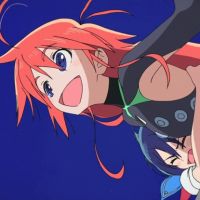
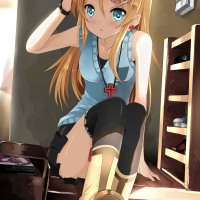
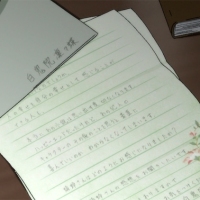
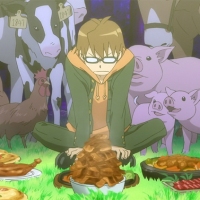


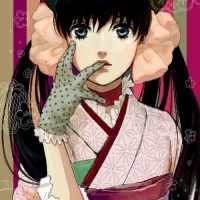

![Blue Friend [Yuri Manga]](https://i0.wp.com/lh3.ggpht.com/_c3hWUvy__P4/TODtxeH57fI/AAAAAAAABRM/Jrn29X5gz0U/Blue-Friend-yuri-manga-cover-1.jpg?resize=200%2C200)
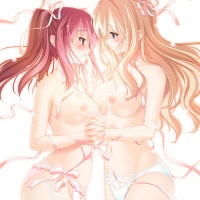


Pingback: Arakawa Under the Bridge Review | Listless Ink
*Looking at the last two pics* *jokingly* Where the hell am I, random world?
Anyway, I think I’m going to watch Arakawa Under the Bridge thanks to you. (Just like how you got me into K-on!, and made me liked it!)
I just hope it’s not a dissapointment. (Unlike… *sigh* Black rock Shooter. And don’t get me wrong, I like the characters. It’s just how they tell the story, which I kept shouting “EXPLAIN” to the anime, since it confuses me.)
Haha yea. I feel like I’m in some random world when I watch Arakawa all the time.
I’m glad you’re going to pick this up. It’s not a total masterpiece, and it’s probably not going to be the most influential anime of the season, but it is a lot of fun.
Hm… This actually has some resemblance to BRS in that you might end up shouting “EXPLAIN” to me at Arakawa too just because of all the random ridiculousness… Well, I hope you do like it. ^ ^
It’s a good thing that while watching BRS, I didn’t shot “EXPLAIN” like this guy: http://www.youtube.com/watch?v=kx-97uRkzRg (And I won’t be doing that to Arakawa either)
Haha, that made me laugh. ^ ^
WHOAHO TYPOGRAPHY!! :>
While I’m still on first season’s 5th episode (:3), I did see second season’s OP and totally dug (and dig!) it. Typography is SHAFT’s trump card in my opinion, though it can be tiresome at times. Despite that, it definitely compliments the zany/playful animation of the OP.
That’s why I love typography so much, and perhaps the main reason I hate Helvetica’s overuse. I know there’s a time for boldness/readability, and for that Helvetica is a fine typeface, but I feel more comical/personality-driven typefaces take more effort to output and utilize. With Helvetica it’s like, “MEH let’s just slap this here anndddd OKAY let’s get some lunch people!” Well, not everyone is this lazy but yeah, it can get quite boring.
Btw, that scene where P-ko totally twists her neck in the OP, OHHH MAN INTENSE!!!
I don’t know that much about SHAFT and I haven’t seen too many of their works, but it sounds like this designy feel is the production’s strong suit. If that’s the case, I must check out more SHAFT anime. I do agree though that sometimes it gets too busy and demanding. Still, I guess I’d rather that than boring.
Anyways, great great point about Helvetica and font personality.
In fact, I feel the same way even about this blog. I wish I could change the typography at different places… But alas, free blogging has its limitations.
The OP is just lovely. Same with first season’s OP too. I hope you enjoy both seasons as much as I do.
I actually never noticed how much typography Arakawa used until you pointed it out. Thinking back, it may just have been that I couldn’t read it so it didn’t leave a big impact on me.
I think it’s kind of a nice visual detail even if you don’t read the texts. The various designs and typography keep the scenes fresh.
I love typography in general, but this is really nice to see it mixed into the show. They also mixed the colorful typography and the song quite well to give it a kawaii flow.
Yea agreed completely. It’s so well integrated into the show. It doesn’t distract from the flow or the comedy, but it does enhance the visuals and the humor. It’s really great design.
Yeah, like Jesus159 mentioned, no studio can do typography quite like Shaft can. Along with the crazy angles it’s what sets them apart from other studios out there. Current series Soredemo Machi wa Mawatteiru also shows some pretty interesting techniques, such as the spinning dialogue explaining what section of the manga particular scenes/episodes have been adapted from; I personally love that touch!
Bakemonogatari also has a huge amount of textual information in each episode, although it’s not nearly as successful. Too many split-second info dumps deliberately flash by randomly and can only be dealt with by pausing the ep, which of course slows/bogs it down or by skipping entirely (i’m guess the Japanese that watched the show live had no choice but to do the latter). Plus the text seems really dull and sterile for some reason, so the use of typography ultimately becomes a burden to the show. A deliberate stylistic approach that, to me, backfired.
Arakawa on the other hand has definately mastered how to use text that work, both in style and substance. The thing that stands out to me is that there are obviously people in the anime’s staff that not only understand English but use it to great effect. This can mean nods to various things like the writing on Hoshi’s various t-shirts, or the very random Vicky Pollard/Little Britain catchphrase (yeah, but no, but…) in the background of S2Ep2 when the Amazoness calls Ric lame (it’s a popular show over here, but I had no idea people in Japan watched it. Maybe someone in the studio is an anglophile or something…).
My fave example was Ric’s secretary Takai’s apron with HisHo (hisho is Japanese for private secretary… apparently; it’s not like I know the language or anything, :p) written on it. The use of a multilingual gag completely caught me offguard. That just one capital letter can make that scene not only hilarious, but pretty clever too never fails to amaze me.
Anyways, hope your enjoying the second series. I personally find it on par with the first even if everybody seems to be hating.
It sounds like Shaft does a lot of refreshing animation techniques. I’m interested in seeing checking out Soredemo Machi wa Mawatteiru now. One thing I have noticed about Arakawa is the straight-up inclusion of manga looks and panels at points. It’s another lovely integration of printed and animated material.
I haven’t seen Bakemonogatari yet. But there’s definitely always a risk when animations try to be more “artistic”. And it’s a very fine line between distracting deliberate attempts and organic refreshing takes. Unfortunately, it sounds like Bakemonogatari didn’t deliver too well. Dance in the Vampire Bund is another example of being too forceful with the techniques. The execution is horrendous. So far, I’ve felt that Arakawa’s various use of typography and different styles play well into the flow of the series. It’s doing a wonderful job of setting it apart… making it unique and fascinating, but not overly pretentious/ dramatic.
I noticed Hoshi’s shirts as well. But I didn’t pick up on the Vicky Pollar reference… Probably because I don’t know who that is. That’s really cool though. I also didn’t notice Takai’s HisHo shirt. That’s actually really clever! Thanks for pointing it out. Another great example of the witty wordplay in Arakawa.
I’m pretty satisfied with the seven episodes out so far. I don’t think it’s worse than the first, especially now that we’re starting to approach the climax. I hope this keeps up for the rest of the season.
Anyways, thanks for the comment as always. It really adds to this post.
That, and it was a wise decision having Etsuko-san do the OP again. She’s the queen of my ears, and I’ll forever have her ringtone’d. I mean, I’m just waiting for my phone to go off illicitly in class so I can share my ardent love.
Yes, the print media emulation and flowery 80s typeface is beautiful, I’ll admit that. Very enticing to my fragmented otaku mind, but it unfortunately still doesn’t save the series for me. In any comedic work recycling jokes is suspect – how does season 2 go in that regard?
I should just go watch it myself, right >.>?
You know what I would jump to watching? An OVA episode or something of nothing but renditions of possible Arakawa OPs.
I’ve fallen in love with Etsuko. Her songs are so lovely. Whimsical, fun, but also chillaxing.
“I’m just waiting for my phone to go off illicitly in class so I can share my ardent love.”
Loll. That’s a good idea. ^ ^
Season 2 doesn’t recycle jokes per se, but the humor is all in the same vein. It does bring in a few new characters. Also, what makes season 2 especially nice for me is that we’re finally starting to get into Nino’s past. If season 1 was about Recruit and his father, then I suspect season will be about Nino and her parents. We’ll see though.
An OVA with a bunch of Arakawa OP’s would be so nice! I really like the one with Maria too.
i want to watch this series now lol
even though i cant read japanese i like looking at the characters, and with typography you can still kinda understand the tone portrayed with the text style used which is cool. its a vital part of media that needs to be appreciated ^^
Yep yep. I didn’t catch all the wordplays and references but it’s still just beautiful to look at. I really appreciate that extra little touch.
one reason that I started watching SHAFT, I realized that they are really great in terms of making their work as realistic as ever.
and since then I tried watching shaft shows and I am easily got attracted to it.
and since arakawa got that typography that I really like so much, I think it was also one of the reason that I tried it., plus I really love that realistic approach on words, as solid as ever… and it was a not-so-typical word play that they put.
Therefore, I appreciated it!
SHAFT does a great job in having really artistic slants to its animation. It’s not always good (Vampire Bund), but when it’s not a miss, it’s brilliant. Arakawa is a great example of that. This anime packs so much style. Anyways, I’m glad you like it too.
Typography, the only course that I hate the most in my diploma…. Word designing is really damn hard! especially when u r using hands to draw on paper with blocks.
Anyways, Season 2’s down side is only the lack of Maria. :C Oh yeah, and the “not so good” ED and the most boring new character “I don’t give a damn mangaka” XD
But the story is as good as always, thanks to Nino and Recruit’s Tsukomi. ^^
Oh, and btw, where can I download MariMite Live action??? its already released… 6th Nov.
Oh I didn’t know you studied art/ graphics design! That’s really cool. ^ ^
Yea, I do wish there were more of Maria… I need my masochistic fix. Also agreed about the new characters. The mangaka and the Amazon were both fairly boring. I do love Billy, the Queen Bee, and the Last Samurai. I’m glad they’re getting screen time in this season. I think Arakawa already has a lot of fascinating personalities; it really didn’t need to dip into new characters. Oh well.
Marimite live action… I’ve totally forgotten about it. Honestly, I’ve kind of lost my interest in it as more previews came out. I tried looking for it earlier, but couldn’t find anything. If I find it, I’ll watch it. If not, I won’t be too disappointed. Sorry I couldn’t be of more help. 😦
Beautiful work. I’ve been a big fan of typography ever since I saw an exhibition in Osaka, but it’s especially interesting when we get typographic work in the Japanese language, since it’s usually so difficult and there’s already a heavy calligraphic tradition.
I call the style in the first couple examples the “Michael Cera movie typeface.” 🙂
I remember you had a post on different type faces various openings used too. It was a fascinating read!
It’s also really interesting to see how design can play around with calligraphy… Samurai Champloo had that one episode about tagging and graffiti, but with traditional calligraphy brushes. In the same vein, a lot of modern art/ design have integrated classical calligraphy into its pieces. But that’s outside the scope of this post or my knowledge. What a wonderful topic to think about. ^ ^
Michael Cera typeface… I love that!
SHAFT is undoubtedly , the best at using typography. Aside from Arakawa Under the Bridge, other recent works which have employed typography brilliantly include the likes of Bakemonogatari and Sayonara Zetsubou Sensei. It’s really interesting to see how usage of a few words can set up the correct mood for an entire scene.
For Bakemonogatari, although some might say it’s too short to be effective, I think it’s successful nevertheless.
I really have to get to watching Bakemonogatari… If only to understand SHAFT and its other works better. But yea, Arakawa is pretty brilliant in this aspect.
Indeed, I’ve always been fascinated by how powerful typography can be to the viewer when properly used. I’ve used typography and typography only with all my wallpapers on Anime Paper, it works! As for Arakawa, I have yet to watch it, probably won’t watch it until I have nothing else to watch (not because it’s a bad series though, I have too many other series to watch). I know for a fact Bakemonogatari does use typography similar to Arakawa though, and it also works quite well ^_^
Yea definitely. A simple text can do wonders for an art work if used properly. The same idea applies to animation, and Arakawa has done that wonderfully.
Anyways, there are so many series out there I need to get to too. Unfortunately, we just can’t watch them all.
Pingback: Arakawa Under the Bridge x Bridge Review | Listless Ink
Pingback: Beauty in Disorder: An Ode to Sex Hair (on Listless Ink) « 2-D Teleidoscope
Pingback: Exploring Typography in Nisemonogatari « Moe Fundamentalism
Reblogged this on compass on my field trip.